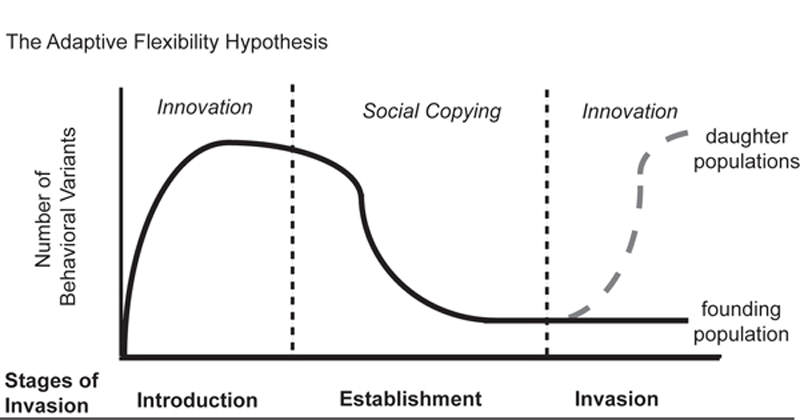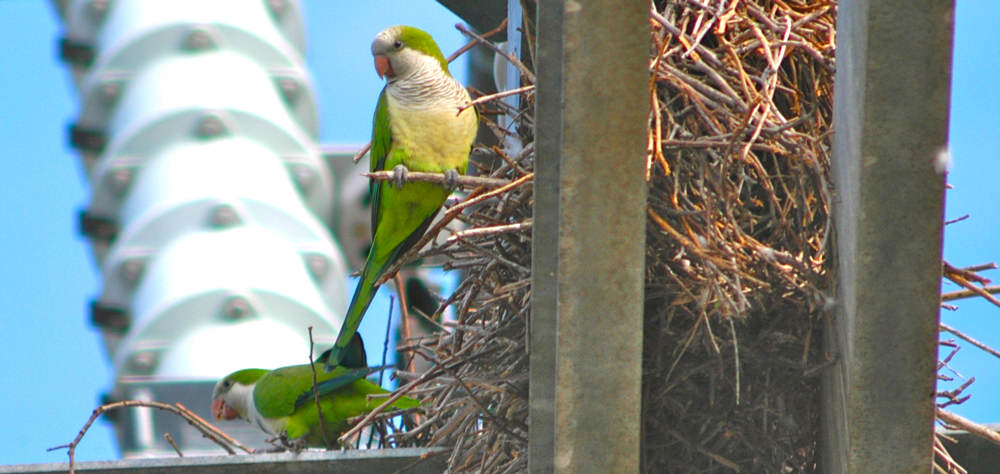 Timothy F. Wright
Timothy F. Wright
Department of Biology
New Mexico State University
(575) 646-1136
email
Research
In the Wright Lab we are broadly interested in the phenomenon of animal communication. We study animal signals from an integrative perspective, asking such questions as how animal signals function to mediate social interactions, what neural and endocrine mechanisms underlie the production and development of signals, and what evolutionary processes give rise to the incredible diversity of signals seen in animals. This work is largely conducted in parrots because of their well-developed learning abilities and complex sociality offers unusual parallels to human language and behavior.
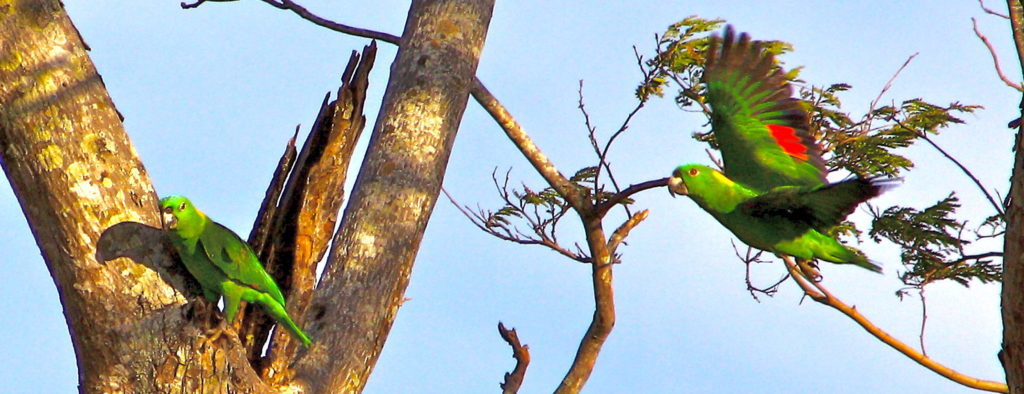
Vocal Learning and Communication in Parrots
Dialects and duets in the yellow-naped amazon: One focus of my work is a long-term study of vocal communication in the
yellow-naped amazon parrot in Costa Rica. I first described vocal dialects in this parrot in 1996 (Fig 1).
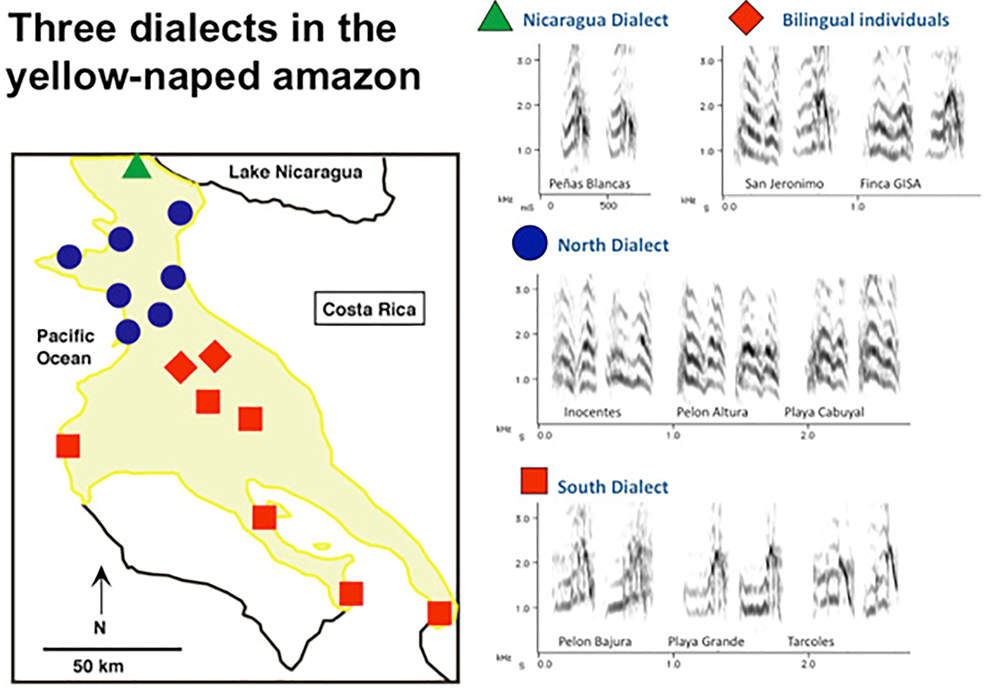
PhD student Alejandro Salinas-Melgoza and I continue to examine the behavioral mechanisms underlying this mosaic pattern of vocal variation using a variety of approaches including, genetic measures of dispersal, experimental translocations of birds and radio telemetry. Our results have shown that vocal dialects do not correspond to genetically distinct populations and that immigrants from one dialect to another can learn the new dialect upon arrival.
We are also studying ranging patterns and habitat use in the yellow-naped amazon. Alejandro Salinas-Melgoza has tracked the movements of radio-marked parrots in two sites with contrasting vegetation density. Data suggests differences in the core areas used by parrots are related to these differences in vegetation density. The vegetation preferred by parrots at El Pelon de la Bajura, an intensive farming site, is clustered on the lowland/highlands boundaries, and individuals at this site to use a smaller area.
Conversely, the Los Ahogados site shows a patchier and more dispersed distribution of the vegetation due to ranching activities. Individuals at this site used a larger area in their movements. Click on the highlighted text to view Google satellite maps showing roosting and feeding areas at each of the two sites. To better compare the differences in area used for individuals at each site, please adjust the scale of each map to 1000 ft.
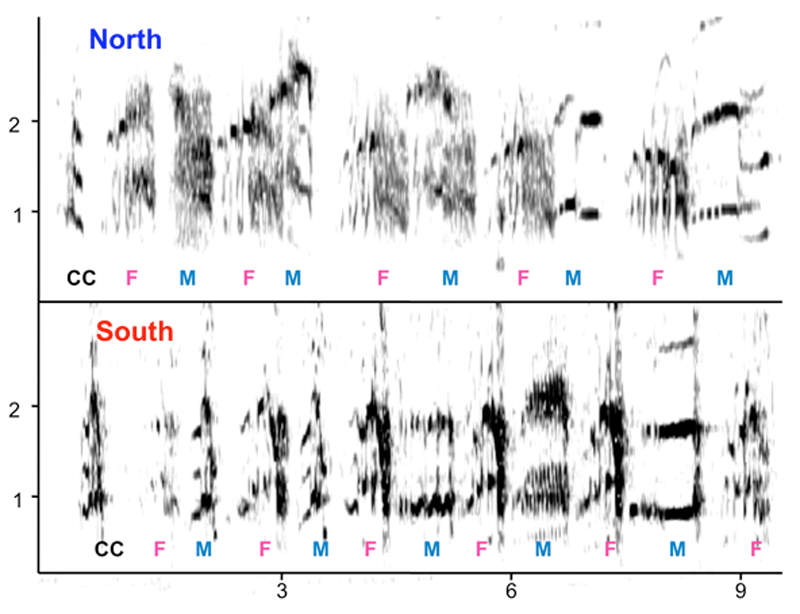 Yellow-naped amazons are also notable for their use of pair duets, which are complex and highly variable signals produced jointly by mated pairs (Fig 2).
Yellow-naped amazons are also notable for their use of pair duets, which are complex and highly variable signals produced jointly by mated pairs (Fig 2).
For her dissertation research, Christine Dahlin investigated the relationship between duet structure and function using behavioral observations of nesting pairs and playbacks of synthetic duets that break specific syntactical rules. Our results show that while nesting pairs will not respond to duets from foreign dialects, they do respond strongly to duets from their local dialect, even if these duets have strongly altered syntax. These results suggest that duets play a critical role in establishing and maintaining nesting territories. Work on the yellow-naped amazon has been funded by the National Geographic Society and the National Science Foundation.
Vocal and genetic variation in the thick-billed parrot: The thick-billed parrot is an endangered species found in the high-altitude pine forests of the Sierra Occidental of northern Mexico. Historically its range extended into the Chiricahua Mountains of southeastern Arizona, but it is now restricted to a few breeding colonies in Chihuahua. In collaboration with investigators from the Tecnologico de Monterrey, Pronatura, and the San Diego Wild Animal Park, my students and I are examining vocal and genetic variation in this species. Undergraduate Jaime Guerra and I surveyed vocal variation among the three main breeding colonies of this endangered species and found no consistent acoustic differences among colonies, a distinct contrast to the dialect pattern found in the yellow-naped amazon. Undergraduate Daniel Acosta and I are now analyzing patterns of genetic variation among these colonies and the U.S. zoo population using microsatellite markers; these data will help determine the degree to which different populations are genetically distinct and whether they can be mixed during reintroduction efforts. This work has Costs, benefits and mechanisms of vocal learning in the budgerigar: To complement our work on wild parrots, my PhD student Anna Young and I have developed a highly tractable lab system for examining the costs and benefits of learned vocal convergence. Previous work by others has shown that budgerigars kept in small flocks rapidly converge to a shared contact call (Fig 3).
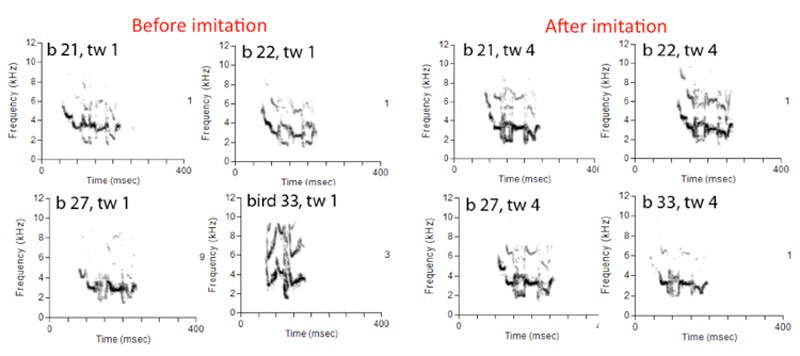
In collaboration with Denis Hallford (NMSU Animal and Range Sciences), we are using experimental manipulations of budgerigar social groups coupled with behavioral observations, endocrine measures, and vocal analyses to examine the behavioral and physiological correlates of this form of adult vocal learning. We are using these data to test the password hypothesis: that flock-specific calls act as a password and learning these calls allows immigrants to gain the benefits of flock membership.
With funding by the NIH, we are expanding these studies to investigate the neural and endocrine mechanisms underlying vocal learning in budgerigars in collaboration with Stephanie White (UCLA). Postdocs Erina Hara and Osceola Whitney are leading a team of 3 undergraduates (Tawni Voyles, HHMI; Esteban Lucero, NIH BRAiN, and Jemima Perez, NIH RISE) comparing mRNA and protein expression patterns of candidate learning genes in adult and juvenile budgerigars of different sexes.
(Fig 4) shows expression patterns of FoxP1 and FoxP2 mRNA in vocal learning centers of budgerigars assayed with in situ hybridization.

Parrot Systematics and Life History
Phylogenetics: We have also taken a broad comparative approach to understanding the evolution of learning and other traits in parrots. Much of our work to date has involved the development of tools and databases required for these comparative analyses. One of these is a molecular phylogeny of the parrots, which my PhD student Erin Schirtzinger and I are developing in stages. The first stage was a genus-level phylogeny of the parrots. Recently we published with Leo Joseph and Alicia Toon (CSIRO, Australia) a more detailed phylogeny investigating relationships among Australo-Asian parrots (Fig 5).
A species-level phylogeny of the Neotropical parrots in progress. This effort has also led to an ongoing collaborative project to investigate the systematic affinities of the extinct Carolina parakeet with Jeremy Kirchman (New York State Museum).
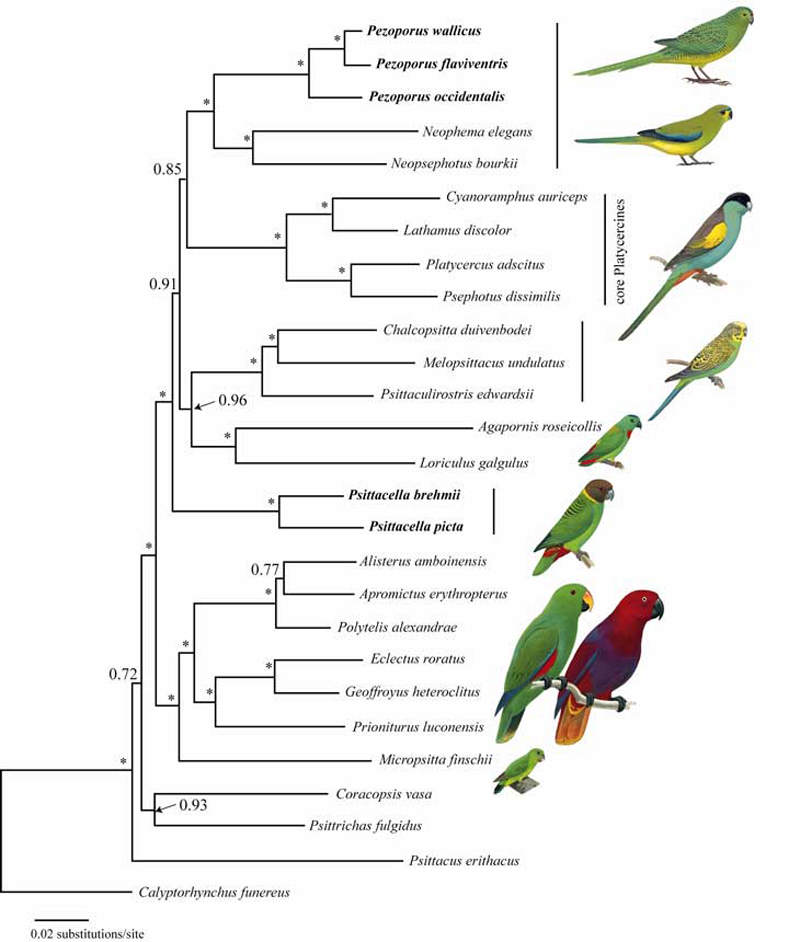
Aging and life history: In addition to the basic insights these phylogenies provide into the systematics and evolution of parrots, we are employing them as a critical tool in comparative analyses that test hypotheses for the evolution of behavioral and life-history traits. The first such test is for an association between lifespan and mitochondrial gene duplications. Such a relationship is consistent with the mitochondrial theory of aging, which suggests that loss of mitochondrial function is a major contributor to cellular and organismal senescence. My collaborator Jessica Eberhard (LSU) and I initially described these unusual duplications in oneparrot clade, and preliminary analyses demonstrated that species with duplications had longer lifespans than those with no duplications. Erin Schirtzinger has now comprehensively mapped the presence or absence of duplications across the entire order of parrots, while Anna Young and Liz Hobson have mined ISIS, the centralized zoo records database, to compile lifespan information for 260 parrot species (Fig 6). This work has been funded by the NIH.
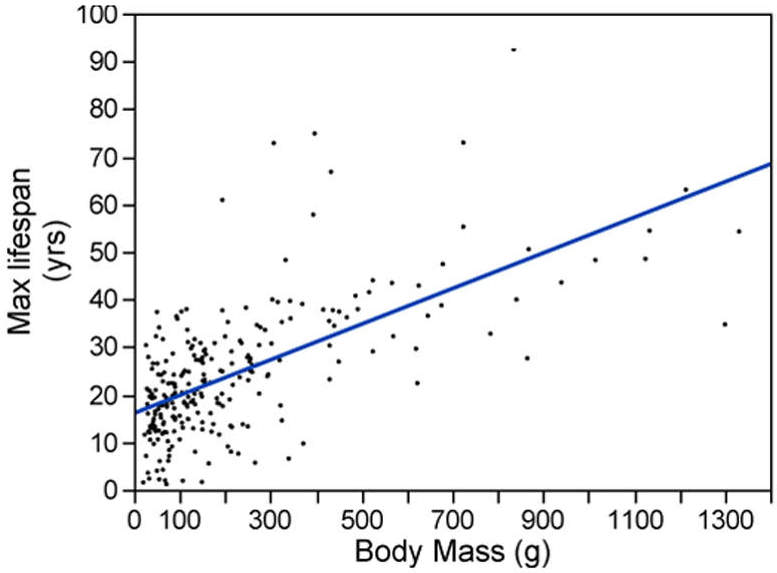
Behavioral Flexibility, Conservation and Invasion Biology
Vocal learning is a specific manifestation of the more general phenomenon of behavioral plasticity, or flexibility. Such flexibility may be an important adaptive trait for long-lived animals that live in variable environments. It may also be a critical determinant of how well animals can survive in human-altered landscapes or invade new habitats. Thus behavioral flexibility may play an important role both in conserving endangered species and in controlling invasive species. Together with several collaborators, I have developed the novel ‘adaptive flexibility’ hypothesis (Fig 7), which proposes that the degree of behavioral flexibility expressed by an individual varies with invasion stage We are examining this question in the monk parakeet, which has successfully established invasive populations in multiple sites across the U.S. and Europe. Collaborators on this work include PhD student Liz Hobson, Jessica Eberhard (LSU), Michael Russello (University of British Columbia Okanagan), Maria Servedio (UNC-Chapel Hill), Michael Avery (USDA Gainesville), and Jose Luis Tella (Estacion Biologica Doñana, Spain).
